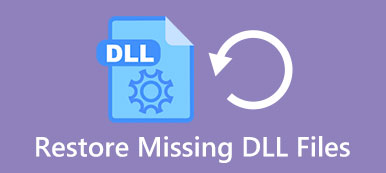
- #THE BEST HARD DRIVE RECOVERY SOFTWARE FREE FOR DLL FILES .DLL#
- #THE BEST HARD DRIVE RECOVERY SOFTWARE FREE FOR DLL FILES INSTALL#
- #THE BEST HARD DRIVE RECOVERY SOFTWARE FREE FOR DLL FILES CODE#
#THE BEST HARD DRIVE RECOVERY SOFTWARE FREE FOR DLL FILES INSTALL#
A developer does not have to install the whole application as one executable. DLLs are part of a modular architecture, which lets a program be delivered modularly. In static linking, system libraries must be loaded into each program, which means every process has its own copy of the same library. If the user decides to print the document, the Word application calls the printer DLL file for loading. For example, if a user is editing a document in Microsoft Word, the printer DLL file does not need to be loaded into memory. DLLs help operating systems and programs run faster, use memory efficiently and take up less disk Space is saved in memory because the files aren't loaded along with the main program. Several processes can use the same page of RAM at once, eliminating the chance of error in the paging process. Problems are less likely to occur at runtime because the DLL is not repeatedly retrieved from the disk. What are the advantages of dynamic linking?ĭynamic linking and DLLs offer the following advantages: Static libraries are embedded into programs, which lead to duplicates among the multiple programs using them. More than one application can access a dynamic library at once, because they are not embedded with the executable at compile time. They can also be modified without changing the entire program that is using it.

Different programs have their own language-specific calling conventions for linking to DLLs.īecause dynamic libraries are not written into the executable, the same shared library can be used by more than one program at the same time. Programs provide the name of the library, and the OS creates a path to the link library. They are called dynamic because they are not embedded in the executable - they just link to it when needed.Īn import library, which is a type of static library, replaces all placeholder symbols with actual links to the necessary DLL data in the main program at load time, pulling those functions from the DLL library. The libraries already are stored on the computer, external to the program that the user writes. DLLs contain the files that a program links to. Static libraries are not shared between programs because they are written into the individual executable.ĭynamic links.

Dynamic libraries are linked later, either at runtime or at load time. Static libraries are linked to the executable when the program is compiled. These are linked earlier in the process and are embedded into the executable. It's turned into an executable file, which is binary code, or machine code, that the computer can read.
#THE BEST HARD DRIVE RECOVERY SOFTWARE FREE FOR DLL FILES CODE#
When a program is run, it must be compiled from its source code, which is human readable code that the programmer writes. They often are composed of multiple files that are linked together. How does a dynamic link library work?Ĭomputer programs are rarely written in a one file.

A shared library can exist in any operating system ( OS). In addition to being a generic term for dynamic link libraries, Dynamic Link Library is also the name of Microsoft's version of the shared library concept for Windows.
#THE BEST HARD DRIVE RECOVERY SOFTWARE FREE FOR DLL FILES .DLL#
DLL files that support specific device operations are known as device drivers.ĭLL contains bits of code and data, like classes and variables, or other resources such as images that the larger program can use. The small program, called a DLL file, contains instructions that help the larger program handle what may not be a core function of the original program.Īn example of those tasks might be communicating with a specific device, such as a printer or scanner to process a document. A dynamic link library (DLL) is a collection of small programs that larger programs can load when needed to complete specific tasks.


 0 kommentar(er)
0 kommentar(er)
